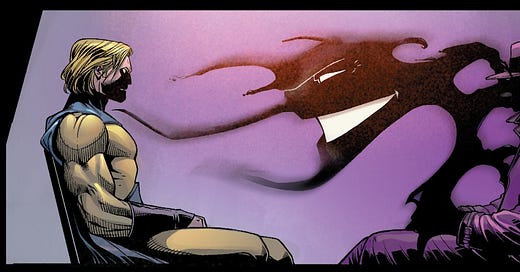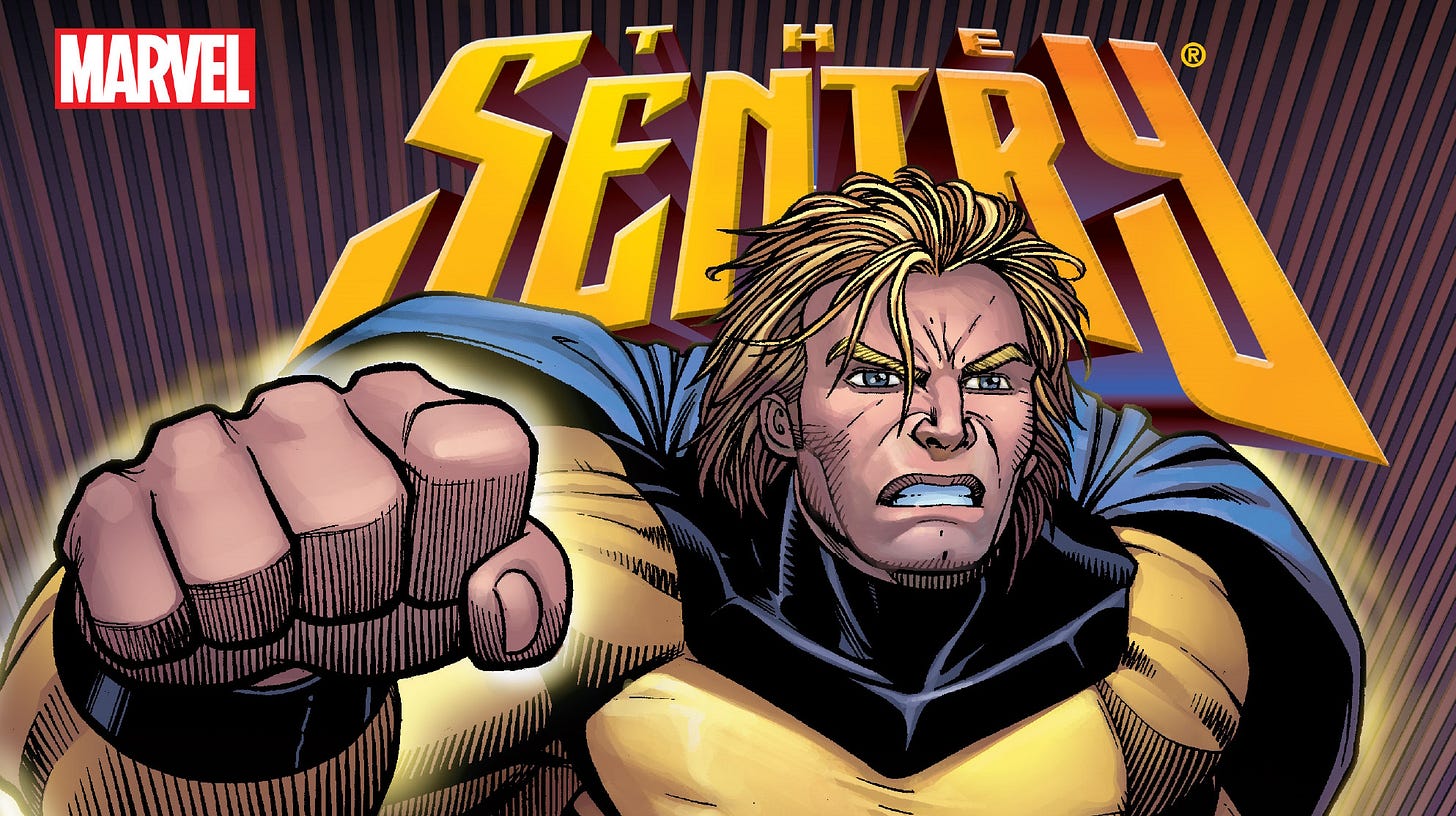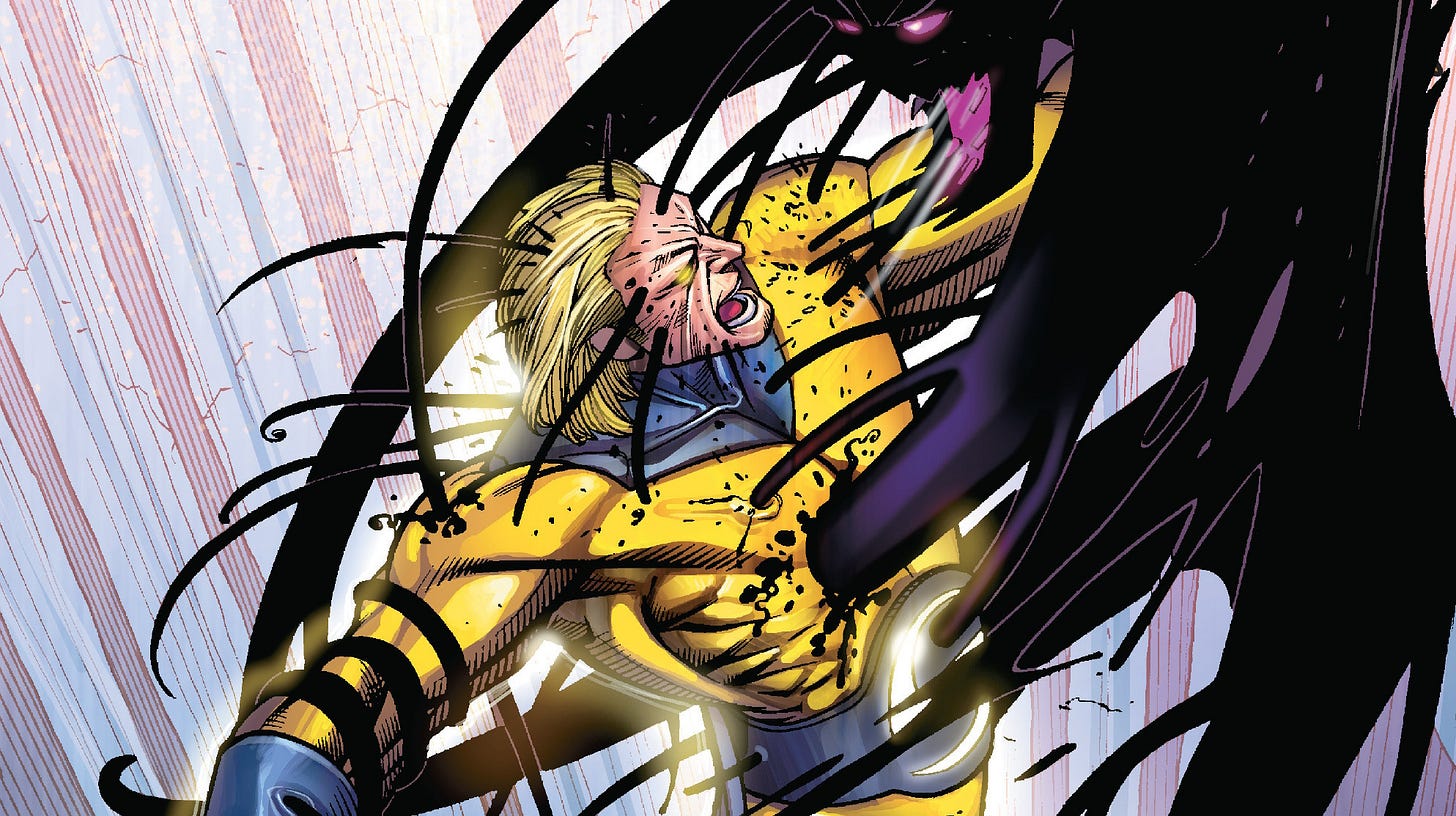The Sentry vs. The Void: Good vs. Evil
The Sentry, the Guardian of the Good, might be one of the most powerful superhero, but he carried a dark secret that makes him the most dangerous being.
The rivalry between the Sentry and the Void is one of the most compelling and complex narratives in Marvel Comics. This fundamental battle between good and evil is not just a clash of physical powers but a profound psychological struggle. The Sentry, also known as Robert "Bob" Reynolds, embodies the light, while the Void represents his darkest fears and destructive impulses. Over the decades, their dynamic has evolved, creating a rich tapestry of stories that explore the duality of human nature.
The Birth of the Rivalry
The Sentry and the Void were introduced in The Sentry (2000) by Paul Jenkins and Jae Lee. Bob Reynolds, an addict, discovers a secret serum, which grants him the power of a million exploding suns. However, this immense power comes with a price: the emergence of the Void, a malevolent entity that seeks to destroy everything the Sentry holds dear. This duality is central to the character's narrative, setting the stage for an ongoing battle between light and darkness.
The Dynamic of Good vs. Evil
The Sentry and the Void are two sides of the same coin, representing the eternal struggle between good and evil. The Sentry is a symbol of hope, heroism, and redemption, while the Void embodies fear, chaos, and destruction. This dichotomy is explored in various storylines, highlighting the psychological complexity of Bob Reynolds' character.
The Void's presence is intrinsically linked to the Sentry's powers. Every time the Sentry uses his abilities, the Void grows stronger. This creates a perpetual cycle of heroism and destruction, with Bob constantly battling his darker half. The series culminates in a dramatic confrontation, where the Sentry must confront the Void to save the world.
The Sentry vs. The Void (2001)
In this miniseries, the Void unleashes its fury on the East Coast, prompting the combined forces of the Fantastic Four, the Avengers, and Dr. Strange to stand against it. Despite their efforts, it ultimately comes down to the Sentry to confront and contain the Void.
The Sentry: Reborn (2006)
The mental instability of the Sentry is an ever-present threat connected to the Void and the possibility of the Sentry being a hero. Bob Reynolds struggles to reclaim his heroic identity while grappling with his inner demons. The Void's influence is a constant threat, pushing Bob to the brink of madness and focusing on the psychological toll of being a hero.
Dark Avengers (2009)
Norman Osborn manipulates the Sentry's fragile mental state to unleash the Void. The Sentry's transformation into the Void results in catastrophic events, highlighting the destructive potential of his darker half. Bob Reynolds might be the powerful Sentry, but he is also vulnerable.
Siege (2010)
The Siege storyline is one of the most significant and dark chapters in the Sentry's history. Manipulated by Norman Osborn, the Sentry becomes a key player in the assault on Asgard. As the battle rages, the Sentry's mental state deteriorates, and he fully transforms into the Void. In a shocking and brutal moment, the Void tears apart Ares, the Greek god of war. The climax sees the Sentry begging his fellow heroes to kill him, believing it to be the only way to stop the Void. Thor reluctantly delivers the fatal blow, ending the Sentry's life and bringing a temporary end to the Void's reign of terror.
The Psychological Struggle
The rivalry between the Sentry and the Void is not just a physical battle but a profound psychological struggle. Bob Reynolds' mental instability is a central theme, with the Void representing his darkest fears and destructive impulses. This duality is explored in depth in various storylines, highlighting the complexity of his character. In The Sentry: Reborn (2006), Bob's struggle to maintain his sanity is a key focus. The Void's influence is a constant threat, pushing him to the brink of madness. The Sentry's battle with the Void is a metaphor for the internal struggles we all face, making his character relatable and compelling.
The Sentry and the Void complement and contrast each other in several ways. The Sentry represents hope, heroism, and redemption, while the Void embodies fear, chaos, and destruction. This dichotomy creates a rich narrative, exploring the duality of human nature. The Sentry's powers are vast and god-like, but they come with a price. Every time he uses his abilities, the Void grows stronger, creating a perpetual cycle of heroism and destruction, with Bob constantly battling his darker half. The Void's presence is a reminder of the fragility of the human mind and the constant struggle to maintain control.
More than Marvel’s Superman, The Sentry and his rivalry with the Void present a compelling and complex story. The fundamental battle between good and evil is not just a clash of physical powers but a profound psychological struggle. The Sentry's journey from a troubled addict to a superhero with god-like abilities is both inspiring and tragic. The constant battle with his darker half, the Void, adds a layer of depth that sets him apart from other superheroes.






